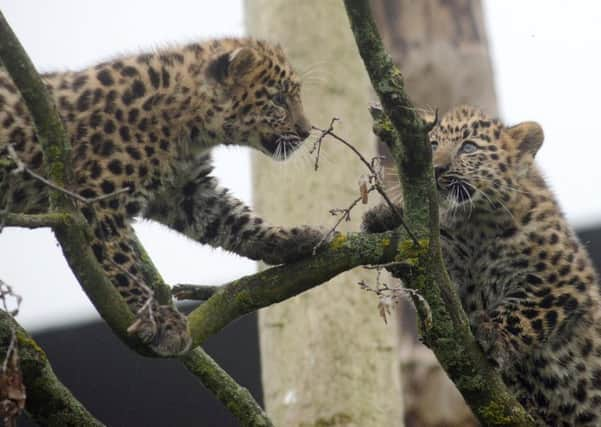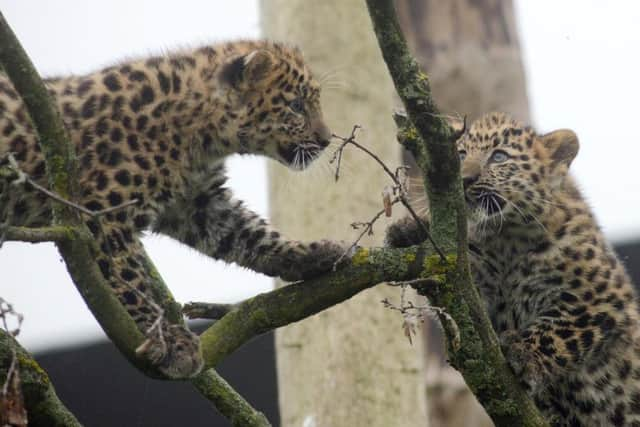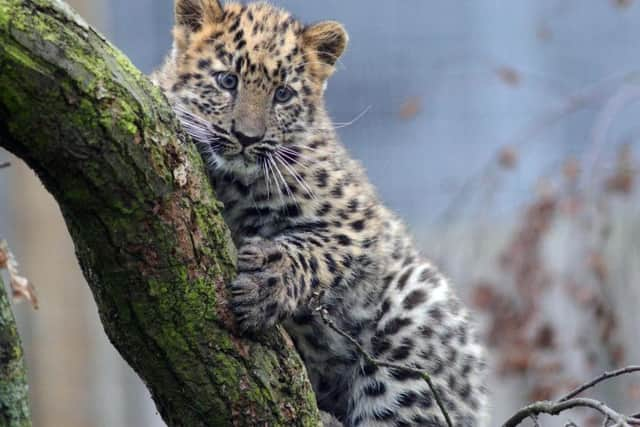Video: First steps in public for Yorkshire’s endangered leopard cubs


Two Amur leopard cubs were born in June at Yorkshire Wildlife Park near Doncaster as part of an international conservation project.
Their species is one of the most under threat on the planet. There are believed to be just 70 of them left in their native habitats - the wilds of far east Russia and China - and attempts to rebuild their numbers have proven to be painstaking.
Advertisement
Hide AdAdvertisement
Hide AdThe cubs and their parents, Drake and Freya, could be critical as part of a plan to reintroduce them back into a particularly remote region of eastern Russia.


Simon Marsh, animal collection manager at Yorkshire Wildlife Park, said: “Conservation and welfare is at the heart of everything we do here so this is painstaking work but with a potentially incredible outcome.”
The young male leopards have just had all their vaccinations and are now strong enough to appear in public.
“I’m sure visitors will be delighted to see them,” Mr Marsh said.
Advertisement
Hide AdAdvertisement
Hide Ad“We are working so hard to make sure the Amur Leopard can prosper in the wild and that we can make a real contribution to save a species that is on the edge of extinction.”


Amur Leopard numbers dwindled because of disappearing habitat and poaching but conditions have stabilised and the Amur Tiger and Leopard Alliance (ALTA) recently announced plans for a re-introduction in the Lazovsky Nature Reserve in Southern Sikhote Alin, an area where leopards disappeared approximately 30 years ago.
Improved conservation efforts in Russia and China combined with an increase in the leopards’ traditional prey of sika deer has provided confidence that population numbers could rise over the next 15 years.
The Yorkshire Wildlife Park’s dedicated Amur Leopard reserve, Leopard Heights, won a BIAZA award for Significant Advances in Animal Husbandry and Welfare in 2013. The reserve layout was designed as a breeding centre for the species, with the nursery area out of sight from visitors to give the young cubs and their mother peace and quiet for the first few months of their lives.
Advertisement
Hide AdAdvertisement
Hide AdThe Park reports that the cubs are now “feisty” and are starting to explore their reserve, and they are ready to move into the next area which has a smaller version of a climbing frame that is a feature of the main reserve where their father Drake can be seen.